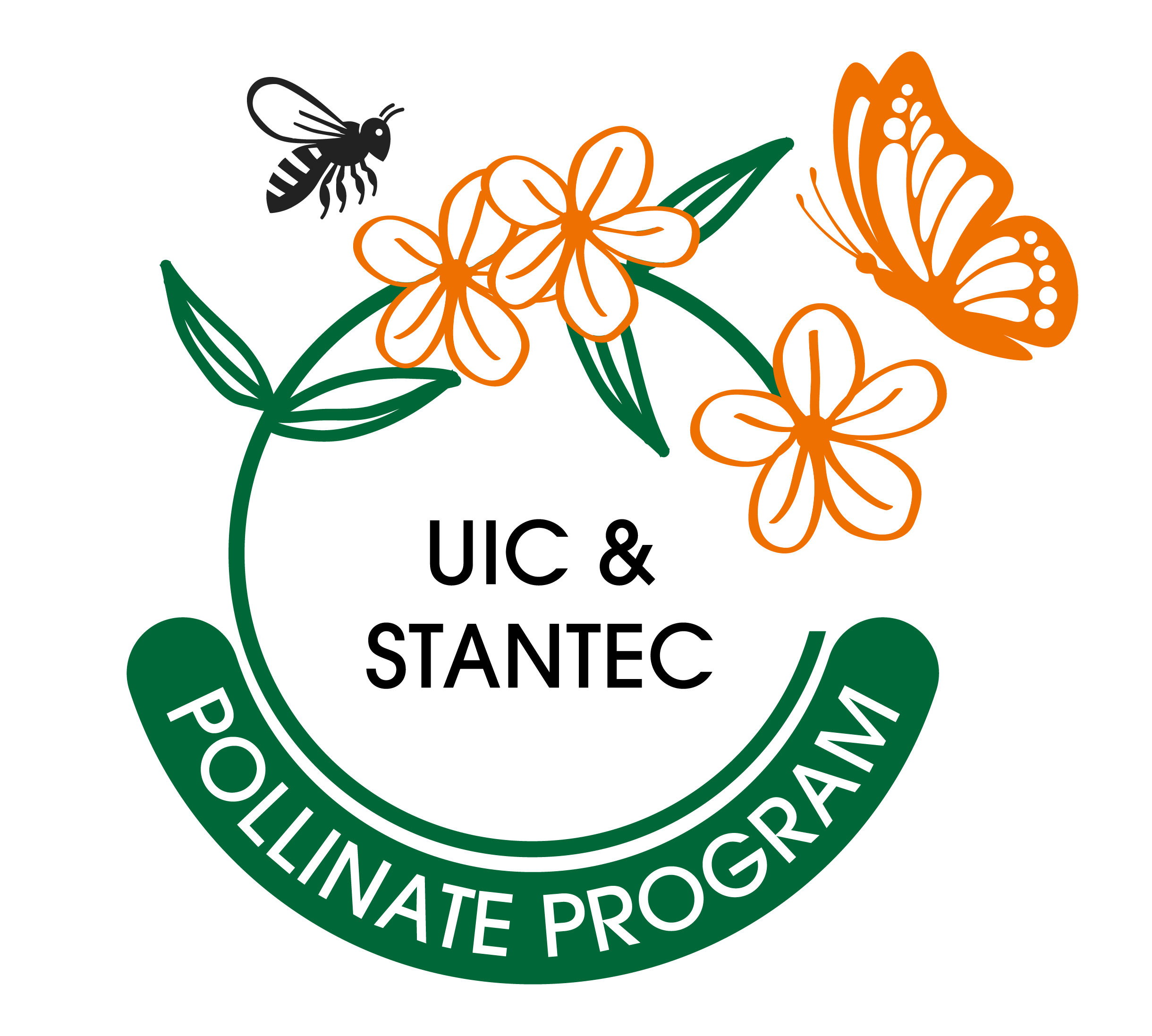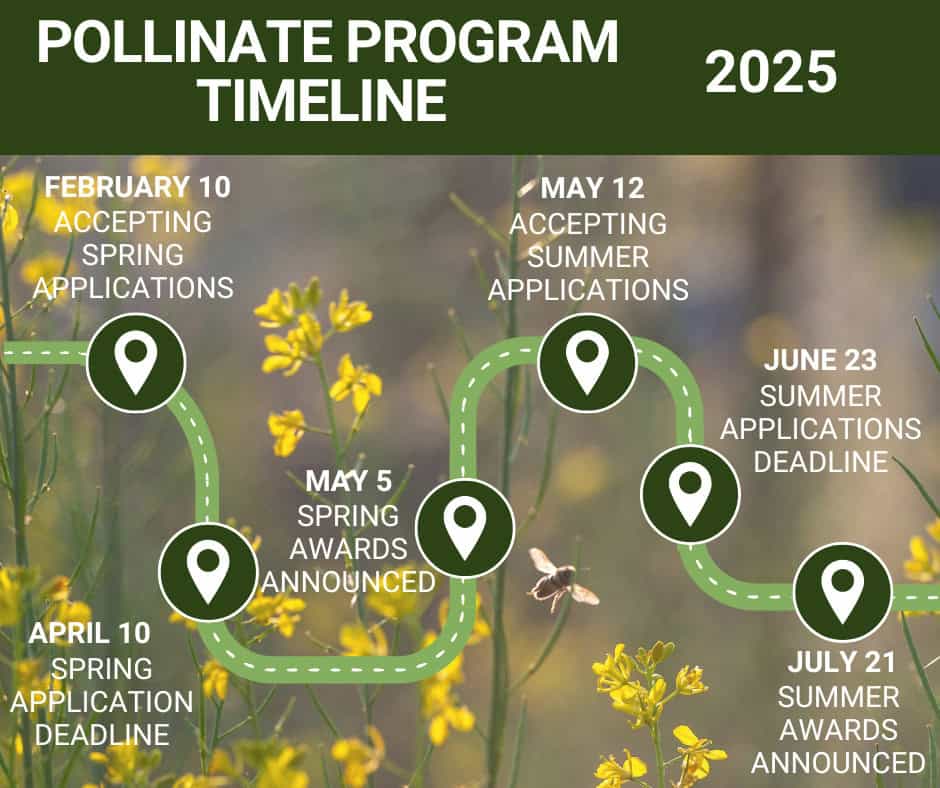
Thanks to a generous gift from Stantec, the University of Illinois Chicago (UIC) is offering a small-awards program to energy and transportation organizations creating and conserving pollinator habitat. In offering this program, UIC is helping companies and agencies engaged in the Rights-of-Way as Habitat Working Group deliver conservation to species and communities where it is needed most.
Small awards are available to organizations and projects meeting the eligibility criteria. Funds will be awarded on or around the award announcement dates following UIC review of applications.
What are the goals of this program?
- Engage company and/or community volunteer engagement in biodiversity and pollinator conservation,
- Support company and/or community-led habitat creation, communications and outreach, promoting biodiversity and pollinator conservation, and
- Build capacity for increased conservation.
How does the program encourage conservation action?
Offering small award funding to energy and transportation organizations can provide a catalyst for small projects that would not otherwise happen without funding, or large projects that may require funding commitments, volunteer time, or match dollars to leverage other resources.
Who is eligible to apply?
To receive funds, organizations applying must meet the following criteria:
| Criteria | Eligibility Requirements |
| Applicant type | Applicant must be any entity owning or managing[1] energy and/or transportation lands[2] within in the U.S. |
| Engagement in the Working Group | Engagement in at least one of the Rights-of-Way as Habitat Working Group projects or programs in addition to the proposed funded project(s). Engagement may include use of tools, manuals, resources, or collaborations fostered by the Working Group. Examples of Working Group projects include, but are not limited to: the Monarch CCAA, Bumble Bee CBA, Pollinator Habitat Aligned with Solar Energy (PHASE), Geospatial Habitat Database, Pollinator Habitat Scorecard, Research and Technical Roundtables, gROWing Chicago, or Illinois Monarch Project. |
| Use of Funds Awarded | Funding awards reimburse costs associated with: pollinator habitat creation using native plants, pollinator garden plantings, seed mix procurement, native plants or materials used for wildlife and biodiversity enhancement, services related to project installation and evaluation |
| Ability to Share Outcomes | Applicant must have ability to share outcomes and results at a future Working Group meeting, roundtable, or other event. Awardees are required to include mention of the Pollinate Program in any outreach or communications in relation to the funded project. |
[1] Owning or managing refers to lands where the applicant has direct land management authority via fee ownership, lease, easement, or other land rights agreement that allows the funded activity to occur.
[2] Energy and transportation lands refers to lands that are used wholly or in part for the construction and maintenance of energy and/or transportation infrastructure used to produce, transport, or store electricity, gas, data, goods, materials, commodities, liquids, or vehicles.
Are there additional selection preferences?
- The number of the Working Group projects or programs in which the Applicant participates,
- The amount of additional funding leveraged to the funded project by use of Pollinate Program dollars,
- Clear objectives or target species identified for use of funds as part of the funded project,
- Funded projects located within disadvantaged communities as determined by geography and data available:
- Within the U.S., when mapped as a ‘disadvantaged community’ in the CEJST mapper.
- Number of partnerships engaged in the funded project, and
- Number of volunteers engaged in the funded project.
What is the typical award amount?
Typical award amounts will be between $3,000-$10,000. Other amounts may be considered, depending on alignment with program criteria and selection preferences.
What is the application timeline?
There are two application windows: spring and summer. See the timeline below.

View the application questions through this link.


